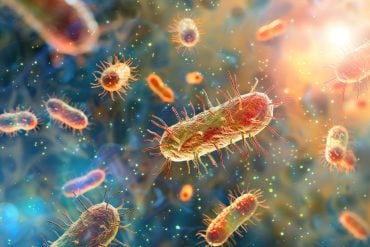Summary: Parapinopsin, a protein found in lamprey, is being used by researchers to manipulate brain circuitry. The protein is able to switch off specific brain circuits.
Source: University of Washington
Researchers looking to help people suffering from addiction, depression, and pain are studying how certain brain neurons operate to see if they can be controlled.
In a paper published May 11 in Neuron, researchers at the University of Washington School of Medicine and Washington University in St. Louis, along with several other universities, successfully used a protein called parapinopsin to turn off brain circuits. This protein is found in lamprey – an ancient lineage of jawless fish similar to eel. Reserachers said the ability to inhibit neurons could eventually lead to turning off mood disorders and unwanted behaviors like depression and addiction.
“We found a particular protein that comes from lamprey that has been around for hundreds of millions of years. We took the gene from that protein and found we can control the way neurons talk to each other, which is how chemicals are transmitted into the brain,” said lead corresponding author Michael Bruchas, professor of anesthesiology and pain medicine at the University of Washington School of Medicine and co-director of the Imaging and Neural Circuits core of the Center for Neurobiology of Addiction, Pain, and Emotion.
For decades, neuroscientists have been using different types of light-sensitive proteins that are expressed in plants and bacteria to experiment with brain circuitry, said Bruchas. But this is the first time a protein was taken from lamprey to control brain circuits.
Parapinopsin is a type of protein called a “g protein coupled receptor” or GPCR. These GPCRs emerged early on in evolution and can be found in organisms ranging from bacteria to humans. Bruchas said there at least 850 of these kinds of proteins in mammals. These proteins control everything from heart rate to fat storage, to reward and stress responses. GPCRs also respond well to chemicals, such as dopamine and serotonin, which make people feel good.
“Some of these GPCR pathways are highly conserved across millions of years of evolution, and that allowed us to hack into them using parapinopsin,” said Bryan Copits, lead author and co-corresponding author, assistant professor of anesthesiology in the Pain Center at Washington University School of Medicine, where Dr. Bruchas was formerly located. Researchers from University of California (UC), Los Angeles, UC Davis, UC San Diego, and University of Zurich were also involved.

The Bruchas Lab focuses on GPCRs. But finding a way to inhibit neurons had been hard to come by until the parapinopsin discovery, Bruchas said.
The researchers found that the protein in lamprey respond to light not chemicals – another approach for targeted delivery. For example, if a part of the brain was having seizures from Parkinson’s, it might be possible to isolate the effect with an electrode, dampen it with adjustments to neurotransmission, or to inhibit specific pathways to improve mood.
Bruchas said the original discovery of parapinopsin was made by researchers in Japan in the Terakita lab, who have been discovering different light-sensitive GPCRs across species.
“This is a perfect rationale for why basic science is so incredibly important,” said Bruchas. “Because of someone’s hard work of basic biological discovery, we have a new tool for medical research. “
Bruchas said his team is planning to use the discovery for research into expanding their knowledge of the inner workings of the brain and to identify treatments for stress, depression, addiction, and pain.
Funding: This work was funded by the National Institutes of Health Brain Initiative, National Institute of Mental Health, and National Institute of Drug Abuse. Grant numbers: R01 MH111520; NIH R21 DA049569, K01 DA042219, K01 DK115634, T32DA007278, P30DA048736, and R35 GM122577.
About this neuroscience research news
Source: University of Washington
Contact: Bobbi Nodell – University of Washington
Image: The image is in the public domain
Original Research: Closed access.
“A photoswitchable GPCR-based opsin for presynaptic inhibition” by Bryan Copits, et al. Neuron
Abstract
A photoswitchable GPCR-based opsin for presynaptic inhibition
Highlights
- •Parapinopsin (PPO) is a photoswitchable Gi-coupled opsin activated by blue light
- •At cell bodies, PPO inhibits neuronal activity to suppress reward-seeking behaviors
- •PPO reversibly inhibits neurotransmitter release at axon terminals
- •Photoinhibition of projections in vivo rapidly and reversibly alters mouse behavior
Summary
Optical manipulations of genetically defined cell types have generated significant insights into the dynamics of neural circuits. While optogenetic activation has been relatively straightforward, rapid and reversible synaptic inhibition has proven more elusive.
Here, we leveraged the natural ability of inhibitory presynaptic GPCRs to suppress synaptic transmission and characterize parapinopsin (PPO) as a GPCR-based opsin for terminal inhibition. PPO is a photoswitchable opsin that couples to Gi/o signaling cascades and is rapidly activated by pulsed blue light, switched off with amber light, and effective for repeated, prolonged, and reversible inhibition. PPO rapidly and reversibly inhibits glutamate, GABA, and dopamine release at presynaptic terminals. Furthermore, PPO alters reward behaviors in a time-locked and reversible manner in vivo.
These results demonstrate that PPO fills a significant gap in the neuroscience toolkit for rapid and reversible synaptic inhibition and has broad utility for spatiotemporal control of inhibitory GPCR signaling cascades.






